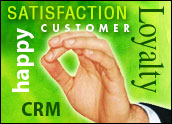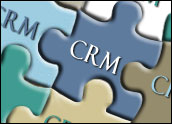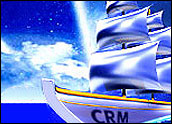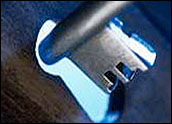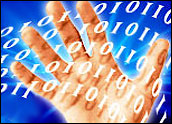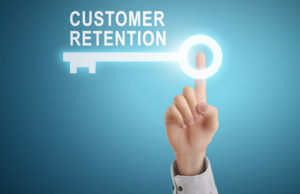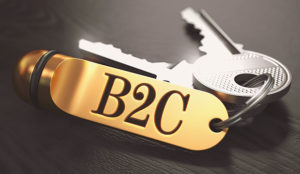
This story was originally published on July 17, 2008, and is brought to you today as part of our Best of ECT News series.
In Internet time, it’s been an eon since “smart appliances” were said to be stocked on the near horizon, but many sunsets later (eight years, actually), the futuristic devices are still, well, in the future. One would think the green movement, among other things, would have pushed this concept along.
“During the tech boom and the push to Interent-ize everything, I expected to see an explosion of remote control/remote detection appliances before now,” John Ragsdale, vice president of research at the Service and Support Professionals Association, told CRM Buyer. “In my opinion, the stall is due to really bad timing for this emerging industry.”
That’s the problem with all things tech — take too long to deliver and a good idea can go south before it ever goes live. But in this case, even Microsoft muscle couldn’t shoulder past the obstacles in time.
Washing Machine Politics
The core issue at stake with remote appliance and home monitoring is what Ragsdale calls “Ragsdale’s Law:” Convenience overrides paranoia.
“When consumers see the value to be had, they will get over their paranoia of having their daily lives monitored,” he explains. “Unfortunately, with so much publicity about eroding civil liberties, the Patriot Act and lost laptops filled with sensitive consumer/constituent data, paranoia remains high. We have yet to see enough value demonstrated to ease these fears.”
Given that Congress just granted an immunity pass to telecoms for spying in the name of the Patriot Act, consumers may hang onto their paranoia for a while longer yet.
The prevailing paranoia could even be accidentally fueled by recent advancements in CRM if they become public knowledge. Take, for example, the Marketing Genius / Sales Genius combo which works on Web sites like TiVo does with television. Sales and marketing people can actually replay a customer’s every movement on the company Web site at their leisure. Sales reps are also IM’d at crucial moments in real time so that the rep can jump right in and close the deal while the consumer is still on the Web site.
While this is great for company sales, it is sure to eventually attract protest from privacy groups and conspiracy theorists. That is, of course, until Ragsdale’s Law kicks in and convenience overrides paranoia as the American public enlarges its comfort zone.
Home Breakers
Closely related to the political problems, are the economic woes that have hit home hard. America is for sale these days but there are few domestic buyers, as evidenced by the glut of homes, land and office buildings stagnating for months, even years, behind “For Sale” and “Foreclosure” signs.
Foreign buyers, on the other hand, are snatching up pieces of the American landscape at bargain basement prices as real estate values and the dollar alike plummet daily. Already such landmarks as the Chrysler building, Rockefeller Center, and the General Motors building have fallen into foreign ownership.
Cities across the country are razing entire neighborhoods plagued by rampant foreclosures in order to save face, prevent squatting, and to elevate real estate prices in remaining neighborhoods.
This all raises the question: What good are “smart appliances” if Americans don’t have a home to put them in?
Not surprisingly, consumer demand for these products is lower than a hoarse whisper.
No Hue and Cry
But even among those Americans still in possession of their homes, demand for smart appliances is shockingly absent.
“Part of the problem is how appliance manufacturers are presenting the technology,” Charles Golvin, principal analyst at Forrester, told CRM Buyer. “Manufacturers view smart appliances only as revenue generators so they put it only in premium devices rather than use it to build brand loyalty and to establish proactive contact with the consumer and upsell service and products from there.”
It’s a short-sighted move on the manufacturers’ part, since Golvin says manufacturers have historically had little to no contact with the consumer and therefore little opportunity to directly influence their sales. This seems a particularly ignorant stance in today’s wilting economy, where proactive CRM usage is at an all-time high as it is increasingly seen as the most efficient means to milk dollars from drying cash cows in industries of any field.
Without the widespread adoption of smart appliances that automatically deliver diagnostic results and repair calls, any CRM attempts on the part of appliance manufacturers are grossly hobbled, and their goods are thus merely allocated to increasingly deserted retail floors.
“I think it is important to understand the options to monetize this,” says Ragsdale. “Margins on appliances are very low, so any company looking to enter this market will likely expect to make money from the monitoring service. Like OnStar, they want as many consumers as possible to pay a monthly/annual fee for the service, and then hope most customers rarely use the service so they can make a profit. If customers are satisfied, they will renew the subscription.”
Dishwasher Disillusionment
Consumers also tend to view smart appliances as mere gadgets, fancy gizmos, or needless luxuries. What comes out in the wash is that the technology does not appear to fill a need. Until consumers see a pay-off — in terms of, say, lower utility bills and/or a healthier environment — they’re not going to get off the bucks to buy smart appliances. But many smart appliances do offer such benefits; it’s just that consumers are unaware of that, for the most part, and there are not enough appliances in the mid- to low-price range that incorporate the technologies to make the benefits available to a broad enough base of consumers. Without strong consumer demand and broad product availability, little more will be done to add efficiencies to the whole smart appliance / smart home concept.
“The technologies are there; they exist, but someone like Salesforce.com needs to see sufficient demand before they write a widget to service the smart appliance consumer, industry and supply chain,” Rawlson O’Neil King, communications director at Continental Automated Buildings Association (CABA) told CRM Buyer.
“Just like RFID technology in a refrigerator in a hotel room (that) can automatically bill the guest for just moving a Coke benefits the hotelier, smart appliances have real value to users but consumers have to understand what that value is and how to gain from it before they will buy,” King continued.
The Living Room Connection
There’s quite a bit about the smart, connected home consumers generally don’t yet understand.
“Only 22 percent of homes in North America have some networking and most of those primarily revolve around sharing broadband applications and basic data use,” explains Golvin. “Only one-third of those are using networking in regards to entertainment such as television, stereos and computers. Only after we see broad adoption of entertainment networking will we begin to see growing interest in smart appliances.”
“I don’t expect traction in smart appliances before 2010 or 2011,” he said.
Consumers understand the value of information and entertainment and they expect the goods to last for a shorter period of time. Most families expect to replace the computer every three to five years, a plasma TV within three years, a sound system within five.
However, Americans expect appliances to last far longer. “People are comfortable with the longevity and reliability of refrigerators, stoves, washing machines, dryers and other mainstay appliances. They are concerned that adding the complexity of new technologies will degrade the lifespan and reliability of these devices,” explains Golvin.
Corporate Drip
There is one force at work that is likely to give the smart appliance industry a definite boost: corporate trickle-down.
“I talk a lot about how consumer trends influence enterprises, but I think this is an example of how enterprise trends will filter down to consumers,” says Ragsdale. “The SSPA has seen massive adoption by our members in the last two years of remote monitoring/remote support which delivers more uptime, fewer problems, and ultimately more satisfied and more loyal customers.”
“The CRM systems should not be a bottleneck,” he says. “As I’ve said, this paradigm is alive and well in enterprise support. When an error is detected, the account, asset and error information can be easily used to create a support incident using a standard API (application programming interface). The incident is routed according to rules in the system for a support engineer to take action.”
“If large corporations can solve all the security/firewall issues involved in remote monitoring of enterprise implementations, we can sure safely detect when a home refrigerator’s compressor is on the fritz,” Ragsdale continued. “As more employees become familiar with remote monitoring/access at work, they will begin to welcome it into their homes.”


